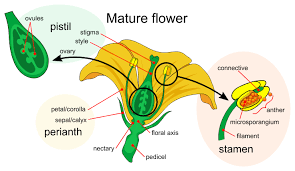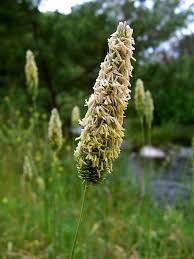NEET CH-6 ANATOMY OF FLOWERING PLANT very important
1.Simple tissues are permanent tissues which do not divide further and are similar in structure and function.
2. Complex tissues from the major components within organs in plants.
3. Specific regions of the apical meristem produce dermal tissues, ground tissues and vascular tissues.
4. The collenchyma occurs in layers below the epidermis in dicotyledonous plants.
5. Apical meristem in grasses regenerates parts removed by grazing herbivores.
6. Collenchyma provides machnical support to the growing parts of plants such as young stem and petiole of a leaf.
7. Shoot apical meristem occupies the distant most region of stem axis.
8. Sclerenchyma often contain chloroplasts and assimilate food.
9. Some cells left behind from shoot apical meristem constitute axillary buds.
10. Secondary or lateral meristems appear early in the life of a plant, produce woody axis and occur between mature tissues.
11. In stem, the protoxylem lies towards the centre (pith) and the metaxylem lies towards the periphery of the organ.
12. The radial conduction of water in flowering plants takes place by the tracheids.
13. Sclereids are commonly found in fruit walls of legumnes, seed coat of nuts, leaves of tea and pulp of fruits like guava, pear and sapota.
14. In gymnosperms, tracheids and vessels are main water transporting elements.
15. Xylem fibres have highly thickened walls with obliterated central lumens and are always septate.
16. In leaves, the ground tissue consists of thin-walled chloroplast containing cells called mesophyll cells.
17. In dicot stem, pericycle is present on the inner side of the endodermis and above the phloem in the form of semi-lunar patches of sclerenchyma.
18. In dicot roots, initiation of lateral roots and vascular cambium takes place in pericycle cells, during the secondary growth.
19. The trichomes in the shoot system may be branched or unbranched and help in transpiration.
20. Pith is large and well developed in monocot roots.
21. In dicot stems, the cells of camblum present between primary xylem and primary phloem is the interfascicular cambium.
22. Between the vascular bundles of dicot stem there are a few layers of radially placed parenchymatous cells, constitute conjunctive tissue.
23. Vascular cambium is generally more active on the inner side than on the outer.
24. Phloem parenchyma is elongated, tapering cylindrical cells.
25. Phloem parenchyma is absent in all monocots.
26. The companion cells help in maintaining the pressure gradient sieve tubes.
27. Phloem in angiosperm is composed of albuminous cells, sieve cells phloem fibres and phloem parenchyma.
28. Phloem fibres of jute, flax and hemp are used commercially.
29. In grasses, the guard cells are bean shaped.
30. Phloem fibres are generally present in both primary phloem as well as secondary phloem.
31. The guard cells possess chloroplast and regulate the opening and closing of stomata.
32. Epidermis is often covered with a waxy thick layer called the cuticle which prevents the loss of water.
33. Ring arrangement of vascular bundles is a characteristic of dicot stem.
34. Heartwood is hard, durable and conducts water but does not give mechnical support to stem.
35. In leaves of grasses, certain adaxial epidermal cells along the veins modify themselves into bulliform cells.
36. Phellogen, phellem and phelloderm are collectively known as periderm.
37. At some places in dicot stem, the cambium forms a narrow band of parenchyma, which passes through secondary xylem and secondary phloem in the radial directions known as secondary medullary rays.
38. Secondary growth also occurs in stems and roots of gymnosperms and monocotyledons.
39. Vascular cambium in dicot root originates from the tissue, above the protoxylem, a portion of pericycle tissue and the tissue located just below the phloem bundles, forming a complete and continuous wavy ring.
40. Bark is a non-technical term exterior to the vascular cambium, therefore includes secondary xylem.
ANSWER
1.T, 2. F, 3. T, 4. T, 5. F, 6. T, 7. T, 8. F, 9. T, 10. F, 11. T, 12. F, 13. F, 14. F, 15. F, 16. T, 17. T, 18. T, 19. F, 20. T, 21. F, 22. F, 23. T, 24. T, 25. F, 26. T, 27. F, 28. T, 29. F, 30. F, 31. T, 32. T, 33. T, 34., F 35. T, 36. T, 37. T, 38. F, 39. T, 40. F.
QUOTE:- “EDUCATION IS THE MOST POWERFUL WEAPON YOU CAN USE TO CHANGE THE WORLD”
Nelson Mandela.

